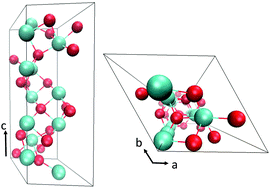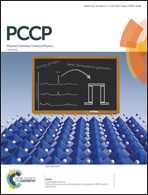Anisotropic ion diffusion in α-Cr2O3: an atomistic simulation study
Abstract
Chromia (α-Cr2O3) is one of the most technologically important oxides, as it is the basis behind the passivation of many structural materials like stainless steel. It both resists oxygen ingress and slows the release of metals from its substrate by its high density and very low diffusivities. Were any further improvement to the protectiveness of chromia to be realized, no matter how small, it would have an enormous impact due to its ubiquitousness. Here we use molecular dynamics (MD) in conjunction with nudged elastic band (NEB) calculations to study the diffusion mechanisms of oxygen and chromium ions in α-Cr2O3. Significant anisotropic diffusion between the ab-plane and the c-axis is observed for both oxygen and chromium ions. We found that vacancy-mediated ion diffusion in the ab-plane is faster than diffusion along the c-axis, while interstitial-mediated diffusion along the c-axis is faster. Vacancy and interstitial defect migration paths unveil the atomistic mechanisms responsible for this anisotropic ion diffusion, as the most energetically favorable diffusion path accounts for the observed anisotropy. The results of this study have profound implications for the reduction and control of corrosion.


 Please wait while we load your content...
Please wait while we load your content...